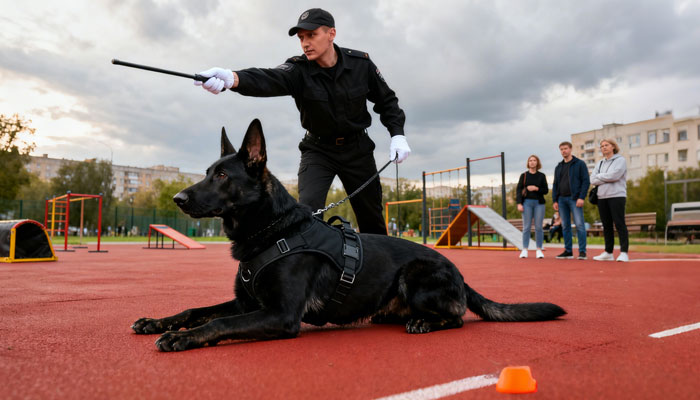Dog Training: Teach Your Dog Respect and Obedience

To become the true “leader” in your dog’s mind and establish your dominance, you cannot rely on punishment or harsh scolding. It’s not simply about demanding obedience, but about becoming the most important person in your dog’s life—the one from whom it receives everything it desires! This is the core foundation for effective dog training.
Ⅰ. Laying the Foundation for Dog Training: Teaching Respect and Obedience
Leadership does not mean controlling your dog out of possessiveness. It means you control all the resources your dog desires—including where it sleeps, its food, toys, your attention, opportunities to go outside, and time to interact with other dogs… In dog training, whoever controls the resources holds the guiding power. You must be clear: you are the decision-maker, not your dog! Only by establishing your “alpha” status in your dog’s mind can subsequent dog training proceed more smoothly and effectively.
Ⅱ. Methods to advance dog training by establishing leadership:
1. “There’s no such thing as a free lunch”: Equivalent exchange is a crucial principle in dog training. Assign simple tasks like ‘sit’ before offering treats, “lie down” before going out, or “shake hands” before playing with toys. This teaches your dog that obeying commands earns rewards, gradually fostering a habit of following instructions.
2. Lead the way: Step out the door first when leaving home, take the first step on stairs—these seemingly minor details subtly reinforce your dog’s “follow-me” instinct. In “heel” training, this awareness helps dogs quickly learn to walk without pulling on the leash and stay close to your pace.
3. Have your dog maintain a sit/lie position for 5-20 minutes: This exercise significantly improves your dog’s self-control. In dog training, self-control forms the foundation for many advanced commands (like “wait” and “stay”), enabling your dog to remain focused and obey your instructions even amid distractions.
4. Never allow your dog on beds or furniture: Your dog must sleep in its own bed. Your bed is your exclusive space in the house, reserved solely for you. Establishing clear spatial boundaries is crucial for rule-building in dog training. This helps your dog understand what is permitted and what is not, reducing unwanted climbing or space-claiming behaviors.
5. Repeat commands only once: In dog training, the “seriousness of commands” is crucial. If your dog doesn’t obey on the first try, it won’t receive the desired reward (like treats or playtime). This keeps your dog focused on your words and prevents the bad habit of expecting you to repeat commands.
6. Ignore your dog’s attention-seeking: If your dog nudges you, barks, or rubs against you with a toy to get your attention, firmly ignore it! In dog training’s “status recognition” framework, only the leader (you) has the authority to decide when to initiate interaction with the subordinate (the dog). Otherwise, the dog may mistakenly believe it can dictate the pace of interaction, undermining future obedience to commands.
7. Ignore Your Dog When It Brings a Toy to Play: Similar to point 6, only the leader decides when playtime begins. In dog training, “control over play” is also a resource. By managing when play begins, you reinforce your leadership role to the dog. You can also weave command training into play (e.g., “drop it,” “fetch”) to make training more engaging.
8. Assist your dog in completing commands instead of repeating them: When you give a command (like “Sit”) and your dog doesn’t comply, avoid repeatedly saying “Sit, sit, sit.” Instead, actively guide them into the position—for example, gently press their hips down to help them sit. Immediately reward them once the action is completed. In dog training, a dog may disobey because it “doesn’t understand the command” or “doesn’t want to do it.” In such cases, “physical guidance” is more effective than “repeating the command,” helping the dog quickly grasp the meaning of the instruction.
9. Focus on outcomes, ignore undesirable behaviors: When your dog engages in unwanted actions (like chewing furniture or relieving indoors), ignore it completely. Avoid scolding or punishment. To dogs, scolding or even a light tap feels better than “being ignored by their owner”—at least they get your attention. In dog training, “ignoring undesirable behavior” teaches the dog that “this action gets no attention,” gradually reducing the behavior. Simultaneously, promptly rewarding correct behavior (like using the potty area or staying calm) reinforces positive actions.
10. Avoid punishment; replace scolding with “positive redirection”: Punishment can not only instill fear and resistance in your dog but also damage the trust between you, undermining the effectiveness of dog training. The correct approach is to avoid scolding when mistakes occur. Instead, teach the desired action—for example, if the dog chews on slippers, don’t reprimand it. Hand it a toy, teach it to “chew the toy,” and praise or reward it when it does so. Replacing “criticizing wrong actions” with “teaching correct actions” allows the dog to learn in a positive environment, making it more willing to cooperate with dog training. .
admin
-
Sale!

Washable Pet Cooling Pad for Cats and Dogs
$10.99Original price was: $10.99.$9.99Current price is: $9.99. This product has multiple variants. The options may be chosen on the product page -
Sale!

Washable Cat Window Hammock Cooling Bed
$23.99Original price was: $23.99.$22.99Current price is: $22.99. -
Sale!

Tropical Amphibian Rainforest Tank, Lizard Cage
$38.99Original price was: $38.99.$36.99Current price is: $36.99. -
Sale!

Silent 4-in-1 Waterproof Charging Dog Hair Trimmer
$49.88Original price was: $49.88.$47.99Current price is: $47.99.